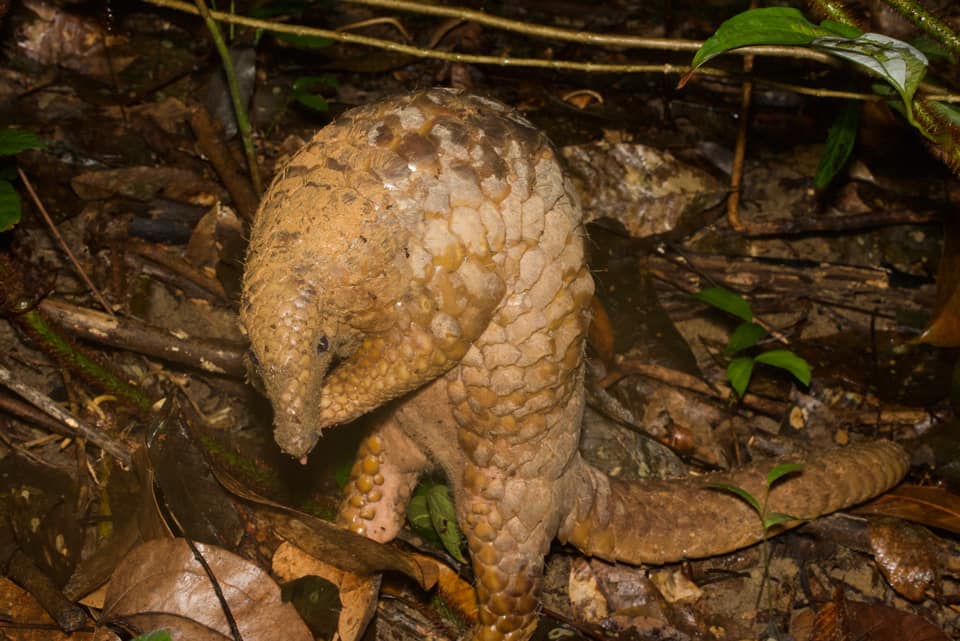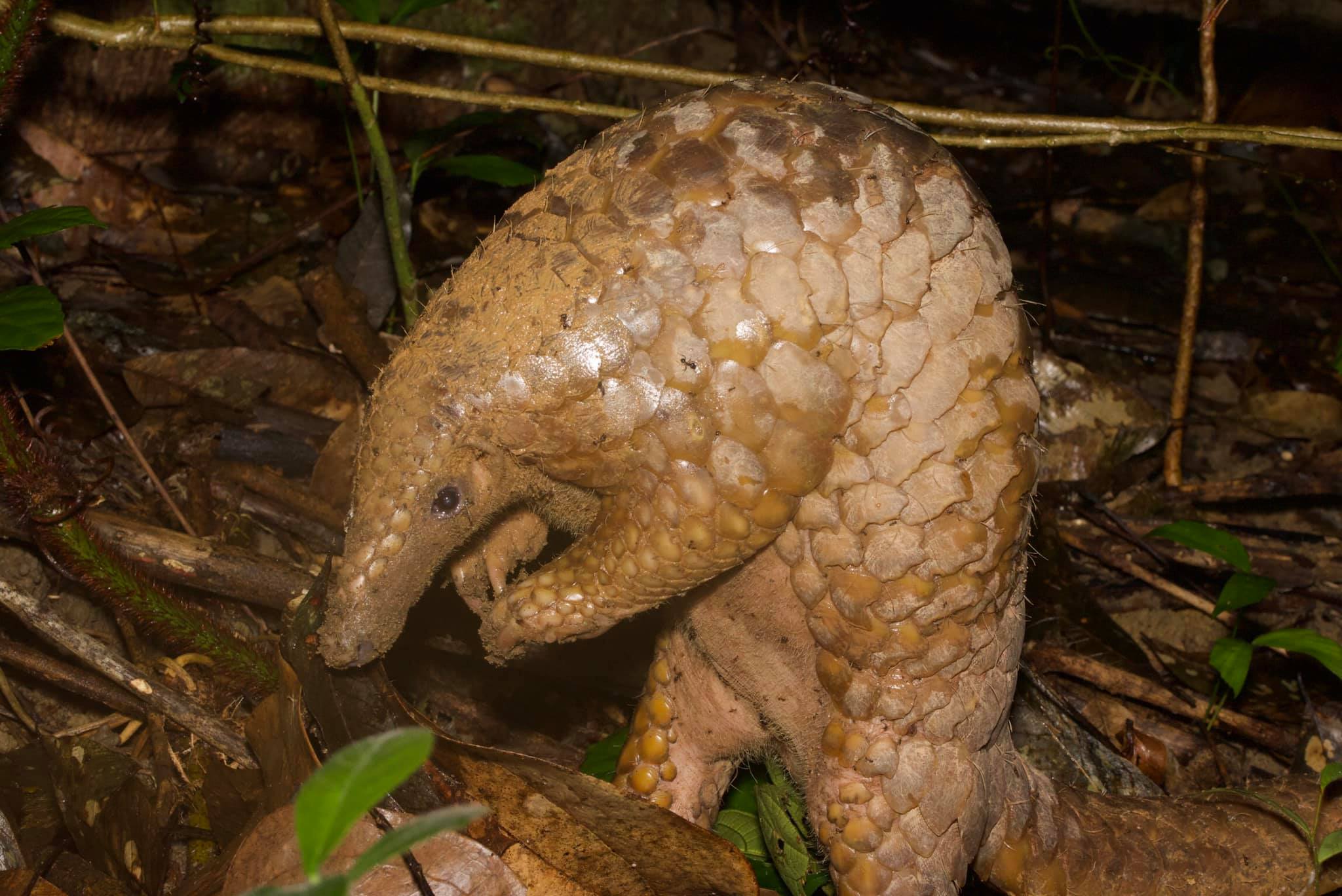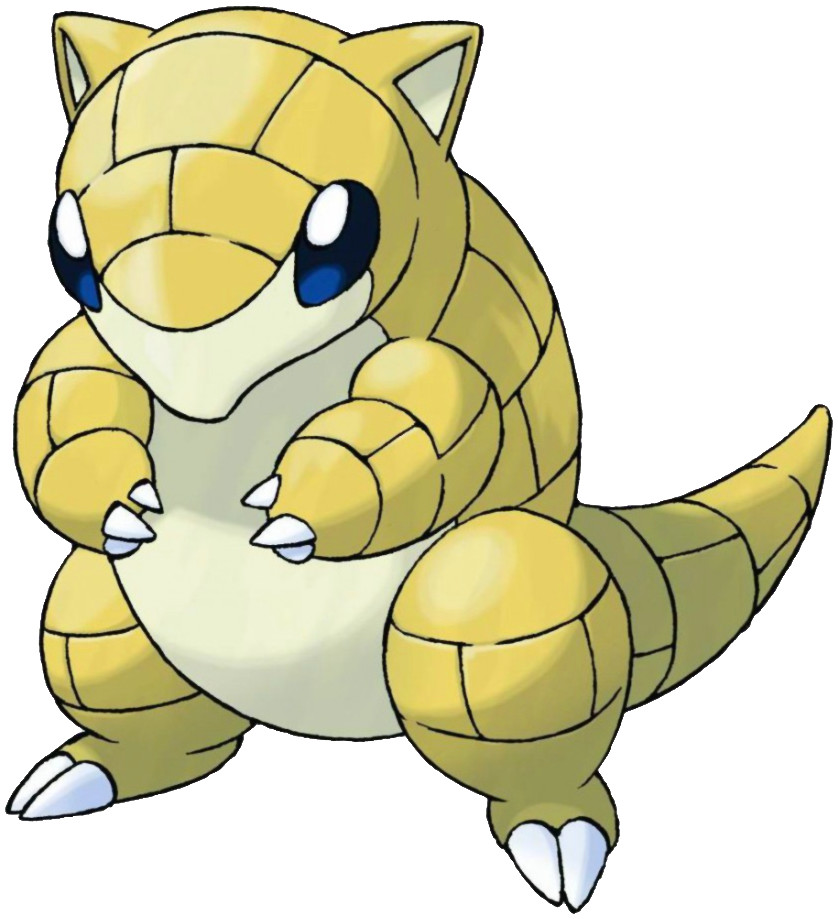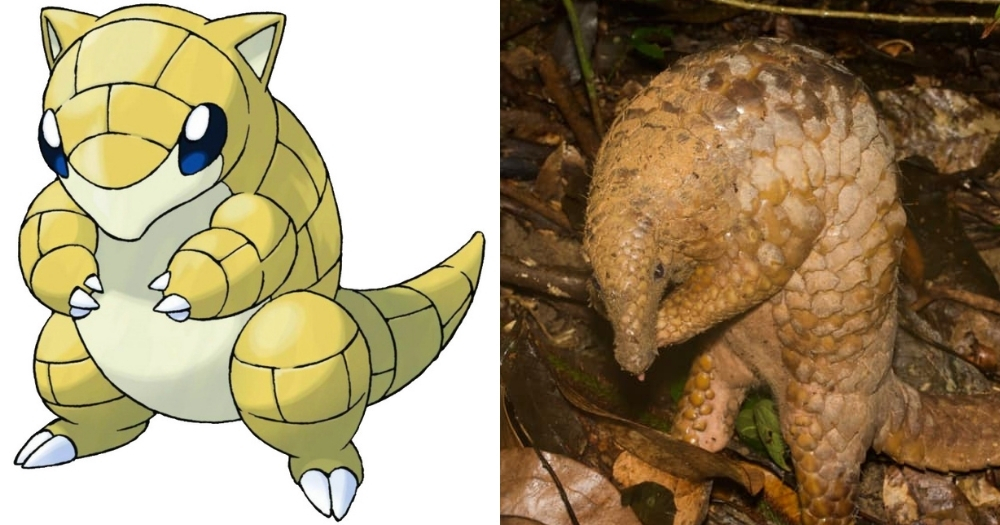Follow us on Telegram for the latest updates: https://t.me/mothershipsg
A Sandshrew Pokémon...no, a wild pangolin was recently spotted in Singapore.
You can see the cute little critter below:
 Image from Singapore Wildlife Sightings/Facebook.
Image from Singapore Wildlife Sightings/Facebook.
Pangolin grabbing a snack
The rare pangolin was sighted by one Marcus Goh, who had initially thought it was a wild boar after hearing some rustlings noises coming from the bushes.
A lucky pedestrian, Goh had managed to snap a few pictures of the scaly mammal in action and shared them in the Singapore Wildlife Sightings Facebook group.
According to Goh, the pangolin was in the midst of its "late night supper".
Here's another photo of the scaly mammal if you are curious to see what a pangolin grabbing a late night snack looks like:
 Image from Singapore Wildlife Sightings/Facebook.
Image from Singapore Wildlife Sightings/Facebook.
Saw the resemblance to Sandshrew
And here's a photo of its fictional lookalike, the Pokémon Sandshrew.
 Image from Pokémon Database website.
Image from Pokémon Database website.
The resemblance is uncanny, as pointed out in a comment in Goh's post.
 Image screenshot from Singapore Wildlife Sightings/Facebook.
Image screenshot from Singapore Wildlife Sightings/Facebook.
Others, however, were slightly more imaginative and saw similarities to a kaiju (Japanese for strange beast).
 Image screenshot from Singapore Wildlife Sightings/Facebook.
Image screenshot from Singapore Wildlife Sightings/Facebook.
 Image screenshot from Singapore Wildlife Sightings/Facebook.
Image screenshot from Singapore Wildlife Sightings/Facebook.
Threatened by roadkill
While pangolins are native to Singapore, these scaly mammals are nocturnal, which means they are mostly active after nightfall.
Pangolins reside in local forests such as the Central Catchment Nature Reserve and Bukit Timah Nature Reserve.
However, they have been seen in urbanised areas, attempting to cross roads to nearby areas with vegetation and greenery.
As the scaly mammals are challenged by the unfamiliar task of navigating urban environments, multiple motor accidents involving pangolins have occured.
In fact, road traffic is a major threat to Sunda pangolins in Singapore.
Its scaly exoskeleton, while handy in the wild, does little to protect the animal from oncoming traffic.
As of June 2021, as many as ten pangolins have met with fatal ends on the roads.
Based on the number of pangolins rescued, and released, the National Parks Board (NParks) estimated that there are only about 100 wild pangolins in Singapore in 2016.
How to help pangolins
Be sure to slow down when driving near nature parks and reserves.
If you encounter a pangolin that appears to be in any danger, e.g. if they are found in the middle of a busy road, you can contact NParks or ACRES.
Besides roadkill, pangolins also face the threat of illegal poaching and are known as the world's most trafficked mammal.
According to the International Union for Conservation of Nature, Sunda pangolins are classified as "Critically Endangered".
If you witness any illegal trading or poaching, you should take photo or video evidence of the traps, snares, nets, trapped animals, poachers, and/or the vehicle license plate number, and call NParks' hotline, or contact the local police.
If you encountered a pangolin, like Goh, you can submit a record to the Singapore Pangolin Working Group, which will go towards the conservation of pangolins.
Other pangolin stories:
Top image from Singapore Wildlife Sightings/Facebook and Pokemondb.net
If you like what you read, follow us on Facebook, Instagram, Twitter and Telegram to get the latest updates.

